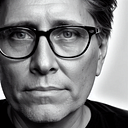Member-only story
Should Maslow’s Hierarchy Include Technology?
Beyond essential, tech is inexorably tied to the human experience.
Put down that smartphone.
That simple request may be harder than it sounds. While some muse on the potential role of connecting technology directly to our bodies, others may suggest that that the smart phone (and other technologies) are already psychologically connected to your anatomy and physiology. Have you put that smartphone down yet?
Technology is ubiquitous, and it’s empowering life. Innovations like nanotechnology, artificial intelligence, GPT, CRISPR, cryptocurrency, and robotics are redefining the very nature of humanity in the evolving world. In fact, technology is becoming so fundamental to the world we live in that we very well may be lost without it. Lost as in actualized, for the scientist, clinician, patient and human. Technology is becoming so basic and fundamental that it might make sense to add it to the first level of Maslow’s Hierarchy of Human Needs.
If you need to jog your memory, Maslow’s levels start with the physical needs such as food and shelter. Then they move upward from security to social to ego and ends with the highest level — human actualization. But it’s the bottom of this hierarchy that is interesting. It’s clear that our physical wellness…
